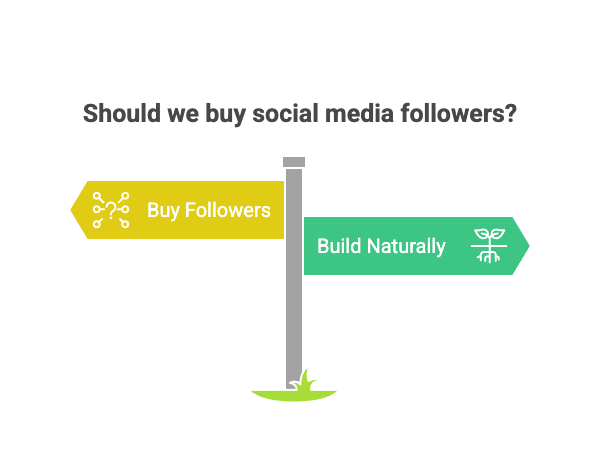Social media is an important part of modern marketing. Facebook has over a billion users; Twitter has become many people’s platform of choice for communication with companies; Pinterest has just become one of the thirty most visited sites on the web.
Businesses who have no social media presence are ignoring a powerful and cost-effective marketing and customer relationship resource, especially if they are selling or providing services online.
Unfortunately, establishing that presence and kick-starting engagement has a cost. It is difficult for a business new to social media to attract followers without a substantial investment of both time and money. For many businesses, they won’t make that investment, and so they feel tempted to manufacture a follower count.
Indeed, people frequently perceive follower count as a measure of success. Furthermore, they also see the ratio of followers to followed this way. Naturally, everyone desires popularity. Consequently, if they can’t gain it organically, they may want to appear popular. This desire often comes without the willingness to invest the necessary time and effort.There are definitely benefits to manufacturing a follower count, but there are also numerous drawbacks.
Priming the Pump
Social proof matters. The approval of our peers is a powerful motivator. If a company shows it is popular and has approval, potential customers and clients will draw positive conclusions, whereas they will be dubious of the apparently unpopular and those lacking approval.
It’s a tricky situation. Attracting followers is hard and can be costly. This is especially true if you lack initial followers for social proof and content sharing. Buying followers from botnets or contacts in less affluent countries seems like a quick solution. They might “like” and “retweet” your content (though often they are just non-interacting bots). These paid followers offer social proof. This, in turn, might attract real followers. Soon, you could have a thriving community.
So what’s the problem?

Getting Caught
There’s nothing quite so embarrassing and uncool being caught paying for popularity.
The upside of social media is unquestionable, but the downside is that a bad reputation is very hard to shake off. A business that is widely known for buying followers is going to have a hard time establishing trust.
Getting caught is not so unlikely as it might seem. The average user is just going to take a quick look at the follower count, but if a business attracts more sophisticated users with experience of social networks, they’ll know what to look for.
Facebook, for example, makes available the figures for brand page’s “likes”, including a graph. If a page has been gradually building up “likes” at the rate of a dozen a day, and suddenly shows a spike of a few thousand new ones over a couple of days, the savvy user is going to be suspicious, and may make their suspicions known. There are Twitter analytics services that make similar statistics available, as political candidates have recently discovered.
Useless Followers
Those tempted to buy followers should ask themselves: “Why am I using social media in the first place?”. Engagement, community-building, customer service, brand awareness, and, ultimately, conversions, are the usual reasons.
Paid-for followers are absolutely useless for all of these goals. Obviously they are not going to buy anything, be a genuine part of the community, or share content with anyone who matters.
Follower Count Is A Poor Metric
As Evan Williams, the ex-CEO of Twitter, has recently pointed out, follower counts are not a good way of measuring social media success. There’s very little correlation between follower count and conversions or shares. Natural retweets and shares are much more valuable, and correlate more strongly with conversions.
What matters is not how many followers, but who those followers are and how they interact. Getting the right followers, with intent to spend, is inevitably a time-consuming, but valuable process.
There are many ways to attract valuable followers over time.
A brand’s social media manager needs to carefully balance the positive and negative aspects of buying followers before going ahead.
What do you think? Whether you agree or not, let us know in the comments below



